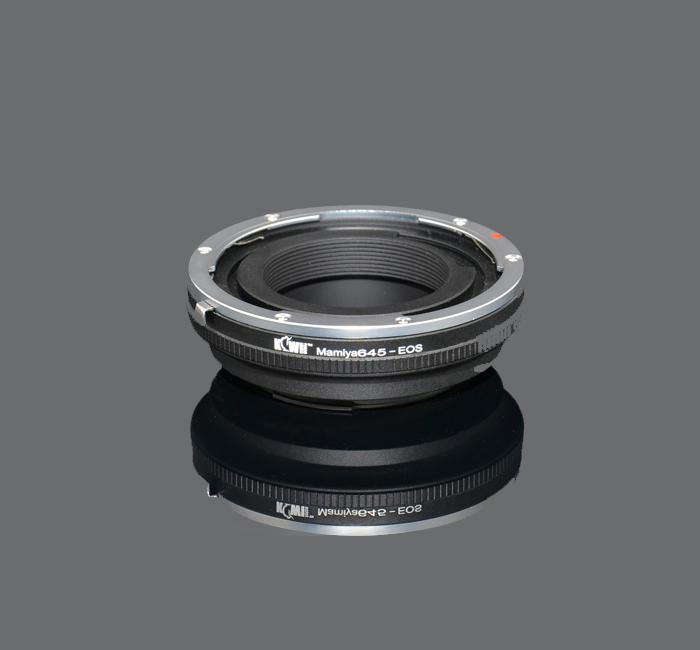
Lens Review: Sony FE 135mm f/1.8 GM Return of the King.Sony 50mm f/2.5 G Lens Review: All the G you need?.

I plan to bring in a couple more contenders: the Canon 5DIII with the 50mm f1.2 lens, as well as the Leica with its native 70mm f2. Kudos to Leica for their unrelenting quest for perfection, and the precision of their engineering. On a side note, it seemed to me that the auto-focus using the Leica S and the Contax lens was better than with the Contax’ original body. I know that these are simply test shots, and not using a real model (besides Molly the dog) but I am pleasantly surprised with the results. The bottom line: I’m really pleased with the functionality of the Leica S adapter-C, and the results here. This is also the best way I can explain how the crop factor plays into the equation. The white lines on the right (Contax film) image are to represent exactly where the frame of the digital image is. I did the tests at f2.4 (rather than the Contax’s f2.0 capability) because I wanted a direct comparison with the Leica 70mm f2.5 lens, which will come later!Īlthough I didn’t move the tripod between shots, the tripod plates weren’t exactly aligned, which is why these aren’t lined up perfectly. Shutter speeds were kept identical with each camera for each pair of shots.
#Adaptor canon contax 645 iso#
Leica S typ 006, S adapter-C, Contax 80mm f2.0 lens, ISO 200, processed in Adobe Lightroom 5.6 to match the film results. Here are a few more details on how I prepared the cameras, and shot this comparison:Ĭontax 645, 80mm f2.0 lens, Kodak Portra 400 film (rated to ISO 200), processed at Miller’s Lab. The two formats used are the ones with outlines: the 645 film, and the Leica Pro. The reason I made this diagram about sensor size is to explain why the two side-by-side images aren’t exactly the same. Let’s get down to business, after a necessary diagram! I highly recommend reading this great article to read on regarding equivalence, which explains lots of the terminology used, as well as the relationship between sensor size and aperture. The new S typ “007” camera even has James Bond street cred, and will now offer live-view, 4k video and high-ISO possibilities!

What I wanted to find out was: how severe was the crop, and could I live with it? I’m writing this just a few days after Leica announced a newer-generation of the S digital camera, complete with an ultra-sensitive CMOS sensor, so this is now even more interesting. I knew that because the sensor size of the Leica S is 30mm x 45mm it would have a “crop factor” with any lens which was designed for a larger sensor or film size (in this case 56mm x 42mm). The Leica S was designed from the ground up for digital imaging, and it boasts a larger sensor that the typical DSLR. It has its own set of amazing ‘S’ lenses, and can adapt to utilize medium format lenses from many other manufacturers. Having tested out the Leica S, and been overly thrilled with it, you can imagine my excitement when I learned of the S-adapter C was available. It allows me to use any Contax 645 lens on the Leica camera.
#Adaptor canon contax 645 professional#
The same iconic camera (and legendary optics) manufacturer who helped popularize the 35mm film format back in the 1920’s has innovated a new format for professional digital photography. So the reason for my side-by-side comparison today is Leica. The 80mm f2.0 Zeiss lens manufactured for the Contax 645 has a magical look when used at certain distances from the subject, and (always!) wide-open! So I’m seeing the world through a larger “scope,” and using a higher-quality lens. There’s even more to it than that: the larger the image sensor (or the negative, when shooting film) then the larger the photographer’s viewfinder. This test is kicking it up a notch with much larger sensors! But there is something that still draws me to shooting film. I can’t tell if it’s the analogue feel of the images, or if I’m simply concentrating more on my composition, knowing that each click of the shutter is costing me about $1.50! Most of my digital photography is done on a 35mm DSLR camera, the Canon 5DIII. My foundation in photography was solidly in film, but I have learned and adapted as digital photography has revolutionized the imaging world.


I ran this experiment to see how well one could emulate the look of the Contax 645 using my favorite 80mm lens, but with a digital camera. It’s not meant to be a test of resolution, color, nor even to try and convince anyone the merits of film over digital, nor vice-versa. In this camera review, I’ll be shooting a medium format film camera, shooting side-by-side with a digital camera using the same lens.


 0 kommentar(er)
0 kommentar(er)
